Earlier, banks primarily relied on traditional marketing channels such as print ads, TV commercials, and in-branch promotions to reach out to customers. However, with the rise of the internet and social media, banks have started to realize the potential of using social media to interact with their customers and promote their services.
As social media continues to play an integral role in modern marketing and communication, banks are increasingly turning to these platforms to build brand awareness and drive business growth.
The American Bankers Association study claims that almost 90% of banks are active on social media.
Their preferred platforms are:
- Facebook (97%)
- LinkedIn (76%)
- Twitter (59%)
- Instagram (48%)
- YouTube (45%)
However, navigating the complex landscape of social media can be challenging for banks, as it requires a strategic approach to reach and engage with customers effectively. In this article, we will explore the benefits of using social media for banks and delve into the specific ways banks can use social media to maximize the impact of their online presence. Let's start!
Table Of Contents:
- Benefits Of Social Media For Banks
- Challenges Of Social Media For Banks
- Creating A Social Media Policy For Banks: Best Practices And Considerations
- How Can Banks Use Social Media?
- Social Media Marketing Strategies And Tips For Banks
- Become A Social Media Powerhouse With The Best SMM Tool For Banks
- Leveraging Social Media To Take Your Bank To The Next Level
- FAQs (Frequently Asked Questions)
You can directly jump to a section of your choice or keep scrolling.
Benefits Of Social Media For Banks
- Boost customer service: Social media allows banks and finance companies to easily and quickly respond to customer inquiries, complaints, and feedback, thus improving overall customer experience and satisfaction.
Our Social Media Client Care Team is available to help until 5 pm ET today. We will be offline tomorrow for the holiday, and back online on Tuesday at 8 am ET.
— Bank of America Help (@BofA_Help) October 9, 2022
-
Gain deeper customer insights: Social media provides valuable insights into the needs and preferences of customers, helping banks to understand their target audience better and tailor their services accordingly.
-
Improve online reputation management: By actively monitoring and responding to customer feedback on social media, banks can proactively manage their reputation and address any negative perceptions.
-
Maximize brand visibility and awareness: Banks have the potential to reach a wider audience and increase brand visibility using social media, helping them to attract new customers and retain existing ones.
-
Increase accessibility: Banks can provide customers with convenient and accessible information and support in the least amount of time using social media, improving the customer experience.
-
Optimize efficiencies: Banks are using social platforms (such as Facebook) as an efficient way to process applications and an alternative to online banking. Facebook credentials are even used by banks to verify the identification of their customers, which is a significant turning point for banking institutions.
Challenges Of Social Media For Banks
- Regulatory compliance: Banks must ensure that they are following all relevant regulations when using social media, including the Gramm-Leach-Bliley Act (GLBA), the Fair Credit Reporting Act (FCRA), the Payment Card Industry Data Security Standard (PCI DSS) and more. This may involve implementing strict privacy and security policies and regularly training employees on how to use social media in compliance with these regulations.
Read more: Social Media Compliance For Regulated Industries: All You Need To Know
-
Online reputation management: Banks should have a solid online reputation management strategy in place to actively monitor and manage their reputation on social media. Customers have high expectations when it comes to the level of support they receive from banks. If a bank falls short of these expectations, it can lead to negative online reviews and comments that can damage the bank's reputation.
-
Cybersecurity: Banks should prioritize cybersecurity when using social media. This includes implementing strong passwords, regularly updating security software, and regularly training employees on identifying and avoiding potential threats.
-
Resource constraints: Banks should carefully consider the resources required to effectively maintain and grow their social media presence, and allocate these resources accordingly. This may involve outsourcing specific tasks or hiring dedicated staff for social media management and customer service.
-
Managing customer expectations: Banks should be prepared to meet the high expectations of their customers when engaging with them on social media and should have processes in place to promptly and effectively address customer inquiries and complaints.
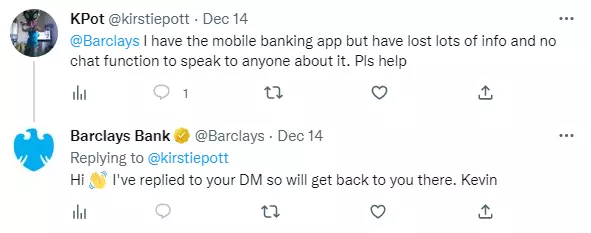
Creating A Social Media Policy For Banks: Best Practices And Considerations
Often, banks have a social media policy in place to guide the use of social media by employees and to ensure compliance with relevant laws and regulations. Banks need to review and update their social media policies regularly to ensure they remain consistent with the bank's goals and values.
The important topics covered in the social media policies for banks are:
Confidentiality And Privacy
Banks are required to protect the personal and financial information of their customers. Hence, their social media policies should include guidelines on which information can be shared on social media and which information should not be shared at all costs.
For example, banks should prohibit employees from sharing personal or financial information about their customers on social media or even asking for any sensitive information from any customer on public platforms like social media. It should be conveyed to the employees that they must use secure channels when communicating with customers about sensitive matters.
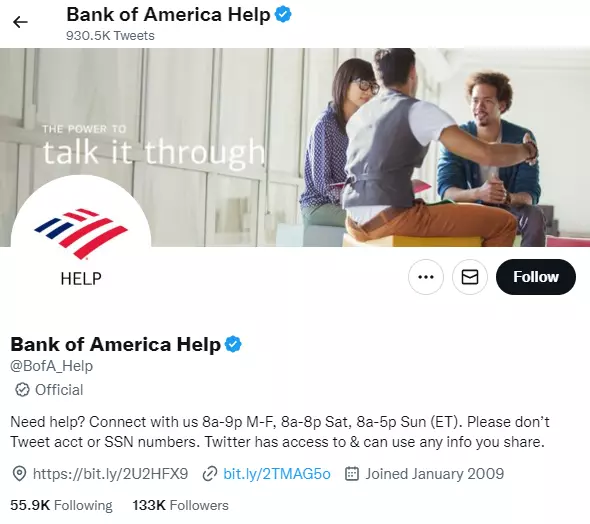
Marketing Practices
Social media effectively allows banks to reach out to their customers and promote their services. However, banks must also ensure that their marketing and advertising activities comply with relevant laws and regulations, such as those related to consumer protection and fair lending.
Social media policies for banks should include guidelines on the use of social media for marketing and advertising purposes, such as the use of hashtags and the inclusion of required disclosures.
Employee Conduct
Social media policies for banks should include guidelines on employee conduct when using social media. These guidelines must outline acceptable behavior for employees when using the bank's official accounts to engage with customers on social media, as well as guidelines for the representation of the bank on social media.
For example, employees should be prohibited from making negative or inappropriate comments about the bank itself or even its competitors on social media. They may be required to disclose their affiliation with the bank when replying to customer complaints and inquiries or commenting on industry-related topics.
Social Media Compliance
Banks are subject to various laws and regulations, including those related to financial services and consumer protection. Hence, social media policies for banks should strictly include guidelines on compliance with these laws and regulations.
Social media policies for banks should include guidelines on ensuring compliance with these laws and regulations when using social media for customer communication, such as avoiding any false or misleading statements and properly disclosing required information such as account number, account holder name, bank IFSC code etc.
How Can Banks Use Social Media?
- Efficient Customer Service
- Marketing And Advertising
- Communication
- Community Building
- Research And Development
- WhatsApp Banking
Efficient Customer Service
Social media for customer service enables banks to quickly and efficiently address customer inquiries, complaints, and feedback in a convenient and accessible manner. This helps to improve customer satisfaction as well as build customer trust.
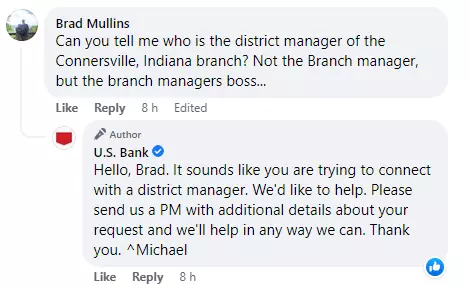
Read more: Social Media Customer Service - How To Do It Right
Marketing And Advertising
Social media is widely used by banks to reach a large and diverse group of audiences and promote their services. They can create ads and social posts targeting specific demographics or interests, such as small business owners or salaried employees, and share content showcasing their offerings' benefits.
Communication
Communicating important information and updates to customers becomes easier for banks using social media. This will help banks to reduce confusion and improve customer satisfaction. They can communicate announcements about changes to fees, policies, or services, share updates of the new additions on their app, and information about services.
We are aware of a technical issue with our phone provider where some customers may be unable to contact us by phone. We apologize for the inconvenience. Please try again later.
— Wells Fargo (@WellsFargo) October 7, 2021
Community Building
A sense of community can be grown among the customers using social media. They can be encouraged to interact with the bank by posting engaging content and hosting events and contests on social media. This will help them to build customer loyalty and create a positive brand image.
Banks that actively engage with customers on public platforms such as social media to resolve queries and address concerns are trusted and can attract new customers.
Research And Development
By listening to what customers say on social media banks can gather customer feedback and insights. This way banks can learn more about their customers' needs and preferences and use this information to improve their services.
Banks can even use social media to stay up-to-date on industry trends and innovations, such as new technologies or regulatory changes, which can help them to remain competitive and meet the evolving needs of their customers.
Read more: The Ultimate Guide To Social Listening In 2022
WhatsApp Banking
WhatsApp banking service allows users to access banking and financial services through the WhatsApp messaging app. This service lets users perform various tasks related to their accounts and financial transactions, such as checking account balances, paying bills, transferring money, and more.
Customers can access the banking services through a dedicated chatbot or through a human customer service representative via the WhatsApp messaging tool.
Convenience is one of the major benefits of WhatsApp banking, as users can access their financial information and perform transactions anywhere at any time. This service provides increased security as the messaging platform uses end-to-end encryption to protect users' personal and financial information. Additionally, features like digital documentation, such as a consulting invoice receipt template, can help businesses and professionals streamline their financial transactions. However, it is essential for users to be aware of potential risks, such as fraud or scams, and take steps to protect their accounts and personal information.
Banks can use this channel to provide personalized services, such as account balance inquiries or account notifications, and to address customer queries and concerns. By providing a quick and convenient way for customers to access the services they need, banks can improve customer satisfaction.
Using a social media management tool like Statusbrew, banks can handle customer inquires from the same dashboard from where they publish and schedule posts to multiple social platforms at once.
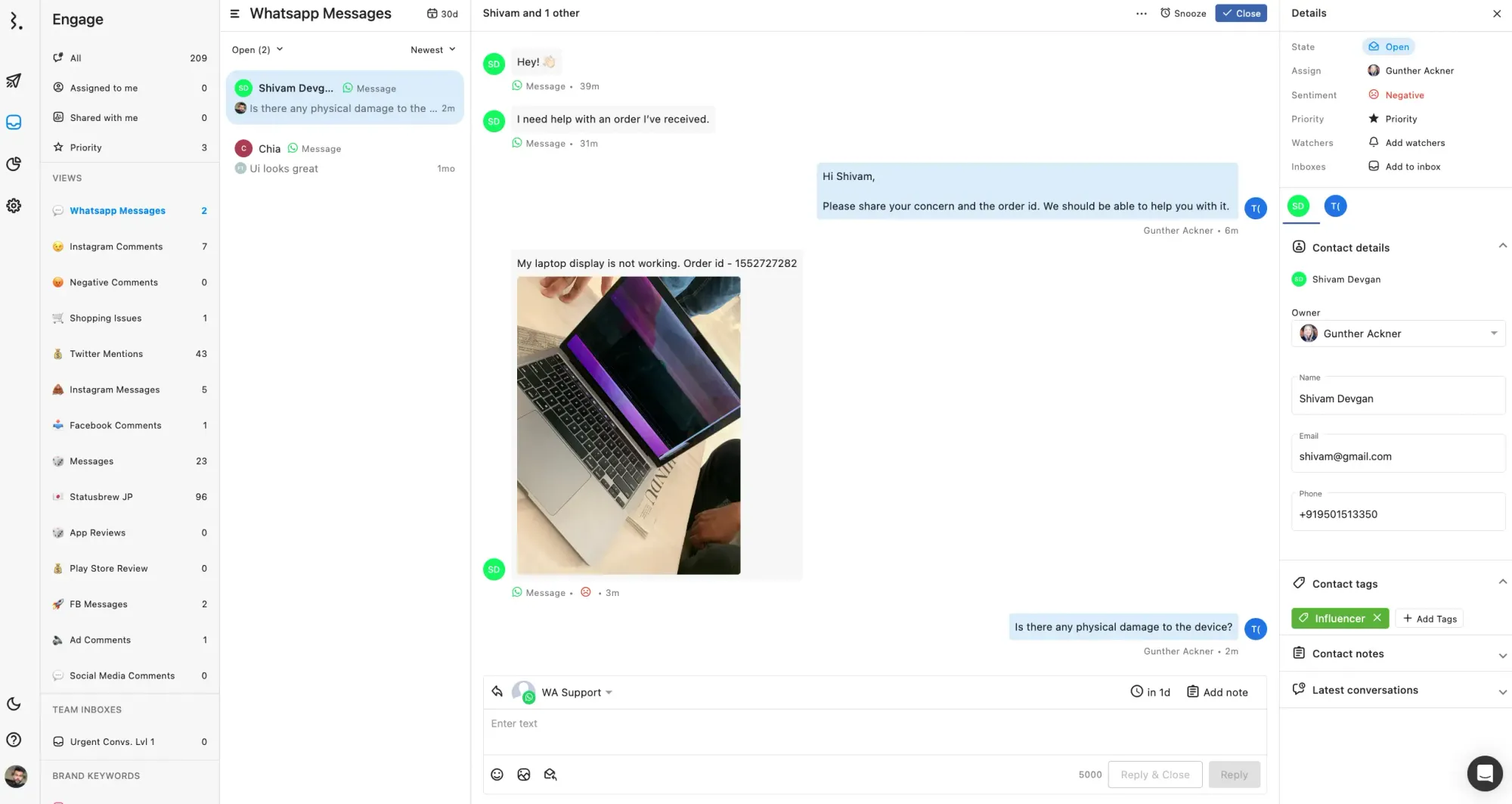
Book a free demo to experience the platform live!
Social Media Marketing Strategies And Tips For Banks
-
Educate customers about financial products and services: Share educational content about financial products and services, such as loans, credit cards, and investments on social media, helping customers make informed decisions about their finances and to build trust in the bank.
-
Engage with customers on social media: Make an effort to respond to customer comments and questions on social media as soon as possible, especially if it's a negative comment/review. This can build customer loyalty and improve the bank's online reputation.
-
Offer special promotions or deals: Ofer special promotions or deals exclusive to your social media followers, such as a discounted interest rate on a mortgage or a waived fee for a particular financial product.
-
Share regular industry news and tips: Share industry news and tips with your followers on social media, such as increases or decreases in interest rates or changes in the eligibility to get loans. This can help position the bank as a trusted source of information and establish its expertise in the financial industry.
We’ve delivered a good set of quarterly results, maintained our strong momentum and retained a tight grip on costs.
— HSBC (@HSBC) October 25, 2022
See more detail on our #HSBC 3Q #results, announced today: https://t.co/kIrpxugwMB pic.twitter.com/EyaIjuMuVy
- Leverage user-generated content: Encourage customers to share their experiences with your bank on social media. This can help create a sense of community and build trust in the bank's services.
Read more: The Complete Guide To Using User-Generated Content On Social Media
- Create social media contests or giveaways: Running contests or giveaways on social media will allow banks to engage with their followers in a fun and interactive way and attract new customers. For instance, banks can ask their followers to share a photo or video related to a financial topic and offer a prize to the winner.
Become A Social Media Powerhouse With The Best SMM Tool For Banks
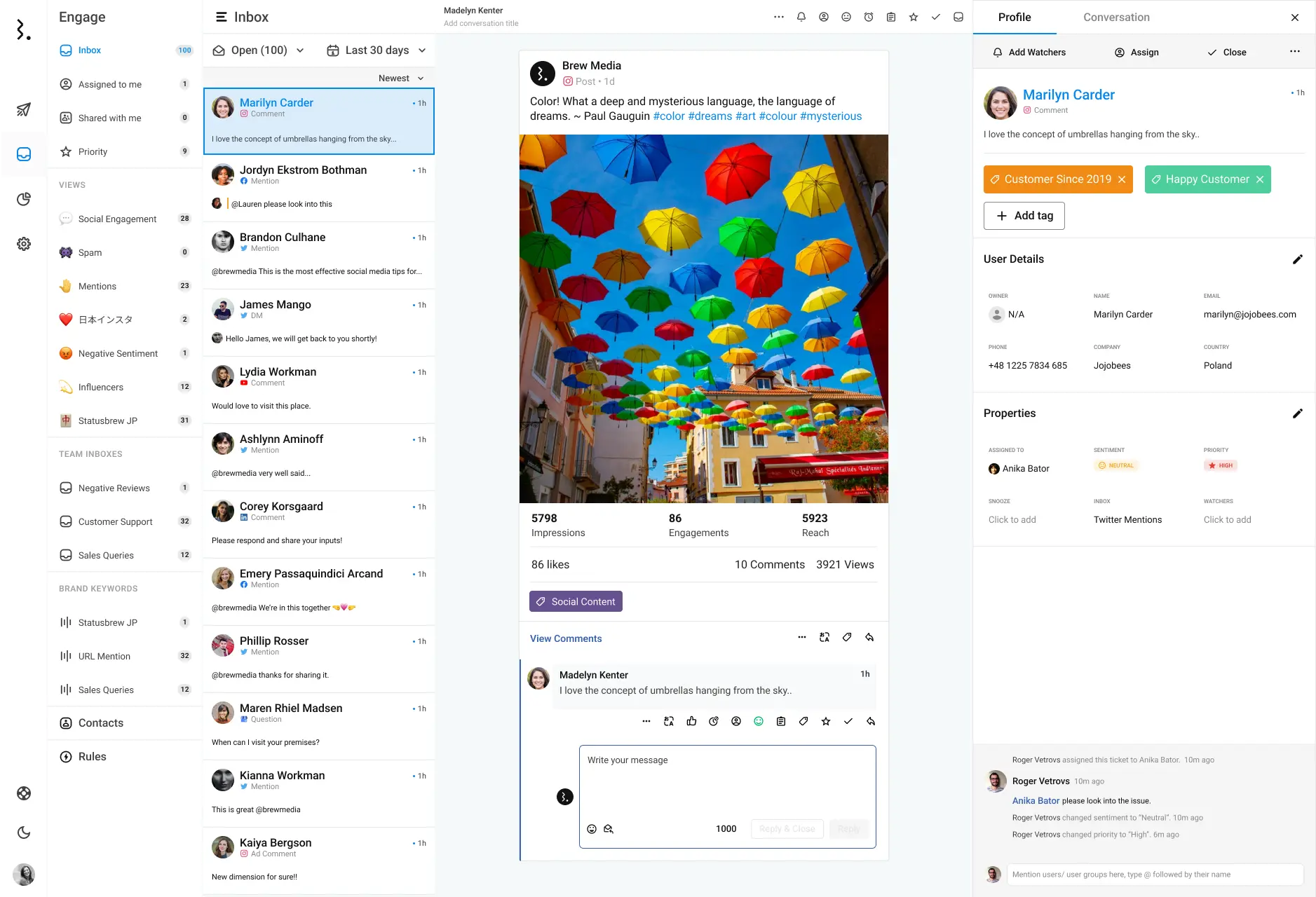
Statusbrew is a social media management platform that helps financial institutions and banks effectively manage and optimize their social media presence. Here are the key features of Statusbrew that can help financial institutions grow on social media:
-
Customer service: Statusbrew lets banks monitor customer conversations from different social media accounts and respond to them promptly by getting notified of all incoming conversations.
-
Marketing: Scheduling and publishing promotional content and creating and runing social media campaigns becomes easier and organized for banks.
-
Analytics: Satusbrew's analytics tools helps banks to track the performance of their content and social campaigns and adjust their strategy accordingly.
-
Team Collaboration: Statusbrew's collaboration features allow banks to streamline their social media workflow and ensure that all team members are on the same page. This can include assigning conversations, approving content, and managing team members' access for compliance issues.
-
Moderating comments: Banks can set up rules in Statusbrew to filter out the spam comments and trolls from their comments section in order to preserve their brand reputation.
Book a free demo to understand how we can help!
Leveraging Social Media To Take Your Bank To The Next Level
Social media is a game-changing spin for banks to connect with their customers and stay ahead of the curve in an increasingly competitive industry. Using social media to improve customer service, reach new customers, communicate important updates, build community, and gather valuable feedback and insights, banks can drive customer engagement, loyalty, and satisfaction.
So if you are a bank employee looking to boost your brand and enhance your customer relationships, it's time to embrace social media and all it offers. Get started today with the best social media management tool: Statusbrew, and watch your bank flourish on social media in no time!
Statusbrew is an all-in-one social media management tool that supports Facebook, Instagram, Twitter, LinkedIn, YouTube, and even Google My Business.
FAQs (Frequently Asked Questions)
Here are some commonly asked questions about social media for banks:
What should banks post on social media?
Banks can share promotional posts and their blogs, ask questions to their audience, conduct polls, re-share other banks' social posts, or share customer testimonials.
Which social media platforms are best for financial services?
The five best social platforms for banks and financial services are Facebook, LinkedIn, Twitter, Instagram, and YouTube.
What are the objectives of the bank's social media strategy?
A well-defined social media strategy for banks can help position the bank as intellectually competent and subject matter experts, thus enhancing consumer confidence in the bank's services and ability to support their banking needs.

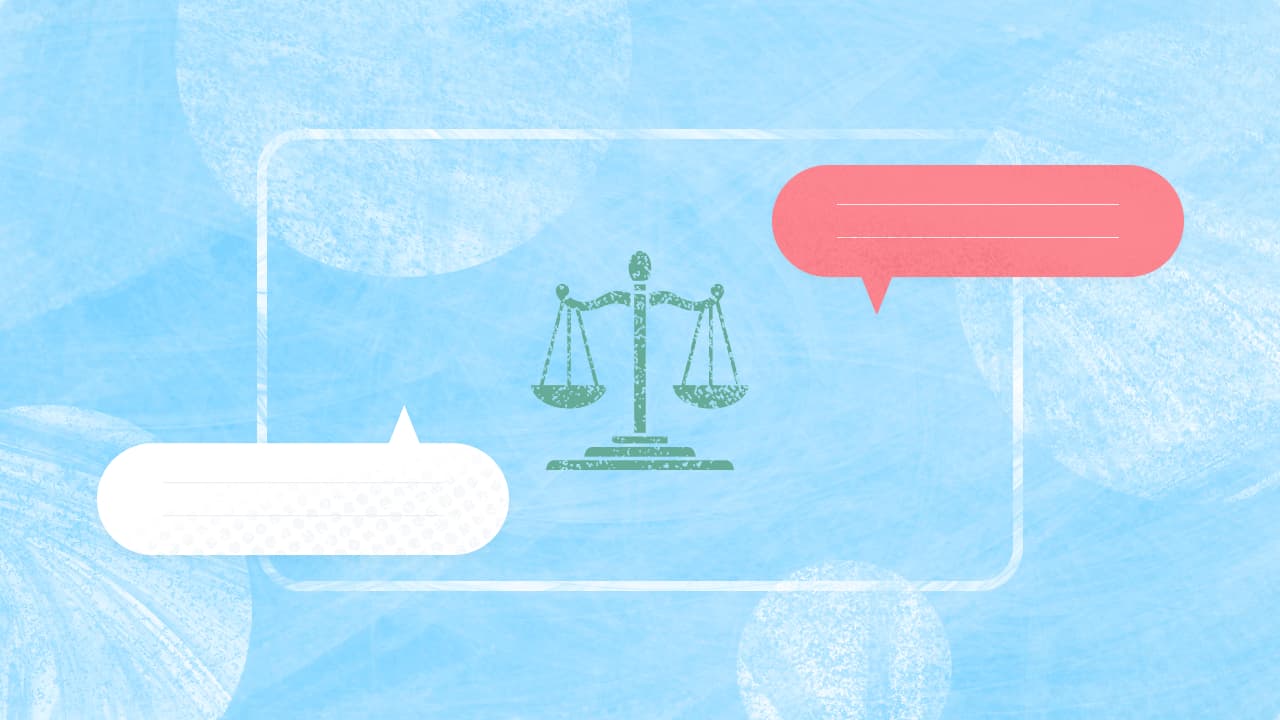
Explore the Statusbrew range of social media tools
Cancel anytime!